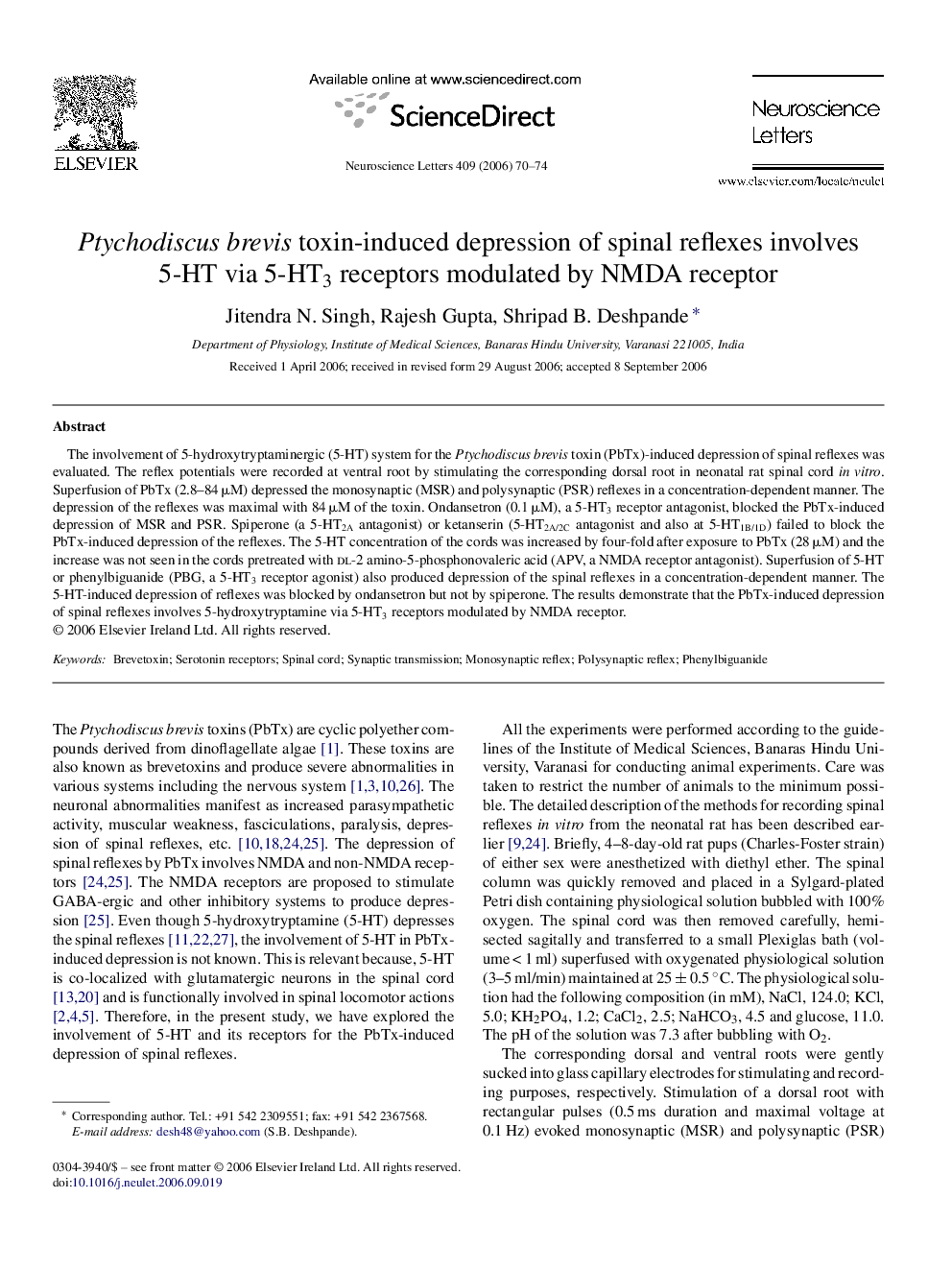| Article ID | Journal | Published Year | Pages | File Type |
|---|---|---|---|---|
| 4350139 | Neuroscience Letters | 2006 | 5 Pages |
Abstract
The involvement of 5-hydroxytryptaminergic (5-HT) system for the Ptychodiscus brevis toxin (PbTx)-induced depression of spinal reflexes was evaluated. The reflex potentials were recorded at ventral root by stimulating the corresponding dorsal root in neonatal rat spinal cord in vitro. Superfusion of PbTx (2.8-84 μM) depressed the monosynaptic (MSR) and polysynaptic (PSR) reflexes in a concentration-dependent manner. The depression of the reflexes was maximal with 84 μM of the toxin. Ondansetron (0.1 μM), a 5-HT3 receptor antagonist, blocked the PbTx-induced depression of MSR and PSR. Spiperone (a 5-HT2A antagonist) or ketanserin (5-HT2A/2C antagonist and also at 5-HT1B/1D) failed to block the PbTx-induced depression of the reflexes. The 5-HT concentration of the cords was increased by four-fold after exposure to PbTx (28 μM) and the increase was not seen in the cords pretreated with dl-2 amino-5-phosphonovaleric acid (APV, a NMDA receptor antagonist). Superfusion of 5-HT or phenylbiguanide (PBG, a 5-HT3 receptor agonist) also produced depression of the spinal reflexes in a concentration-dependent manner. The 5-HT-induced depression of reflexes was blocked by ondansetron but not by spiperone. The results demonstrate that the PbTx-induced depression of spinal reflexes involves 5-hydroxytryptamine via 5-HT3 receptors modulated by NMDA receptor.
Keywords
Related Topics
Life Sciences
Neuroscience
Neuroscience (General)
Authors
Jitendra N. Singh, Rajesh Gupta, Shripad B. Deshpande,
